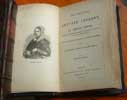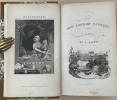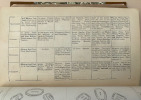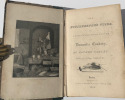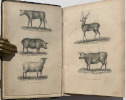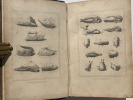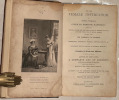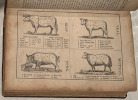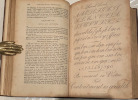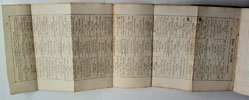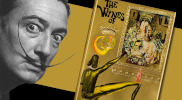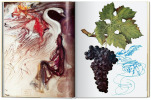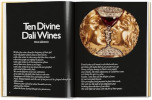Cottage Comforts
WITH HINTS FOR PROMOTING THEM, GLEANED FROM EXPERIENCE: ENLIVENED WITH AUTHENTIC ANECDOTES. BY ESTHER COPLEY. NINTH EDITION. DEDICATED (BY PERMISSION) TO Her Most Gracious Majesty QUEEN ADELAIDE. LONDON: PUBLISHED BY SIMPKIN AND MARSHALL, STATIONER'S COURT. 1832.
12mo. 2feps. Title Page. [1] 2pp Dedication. 2pp Advertisement. 2pp Contents. 1-224. 8pp Index. [1] 2feps. Bound in half black calf with black cloth boards and calf corners. Spine with gilt lines, raised bands and gilt lettering. Good copy with very slight foxing to title page, first nine pages and the pages of the index.
- Esther Hewlitt Copley (nee Buizeville) was born in London on May 10th, 1786. Her father was a silk manufacturer at Spitalfields and the family lived in Hackney. Nothing is known of Esther's early life experiences until her marriage to James Philip Hewlett in 1809. The couple had five children, three sons and two daughters. They set up house in Oxford in St. Aldate's Street. James Philip Hewlett died prematurely of a lingering illness. On August 16, 1827 Esther married Rev. William Copley who was the minister of the Oxford Baptist Church. Esther was a prolific writer publishing more than forty books in her lifetime. These include tracts, works of domestic economy, stories for children, text books, sacred history and biography. It is of interest to note that Cottage Comforts, first published in 1825, reached its twenty-fourth edition in 1864. It is a household management manual addressed to the labouring classes embracing the spirit of both Mrs. Beeton and Dr. Spock. It includes chapters on childbirth, treatment of illnesses, hygiene, animal husbandry, the care and education of children, renting and furnishing a cottage, brewing and cookery. She is forthright with her opinions and practical advice. In her latter days Esther lived in Eythorne with her daughter Emma and Emma's husband, George Sargent. Her death on July 17th, 1851, was caused by tuberculosis, and it seems that her illness was exacerbated by a chill contracted when she was providing help for a needy family. Esther is buried in the Eythorne Baptist churchyard in Kent.



click on image to enlarge

Antiquarian category
ref number:
10930 




